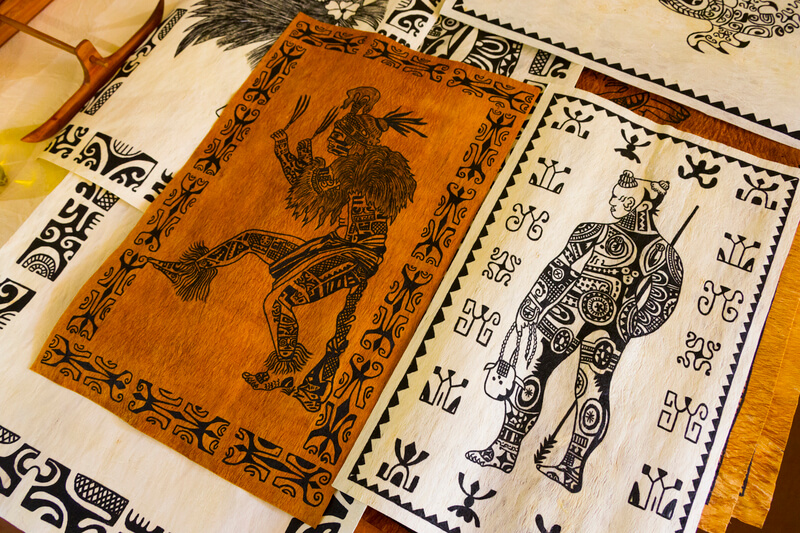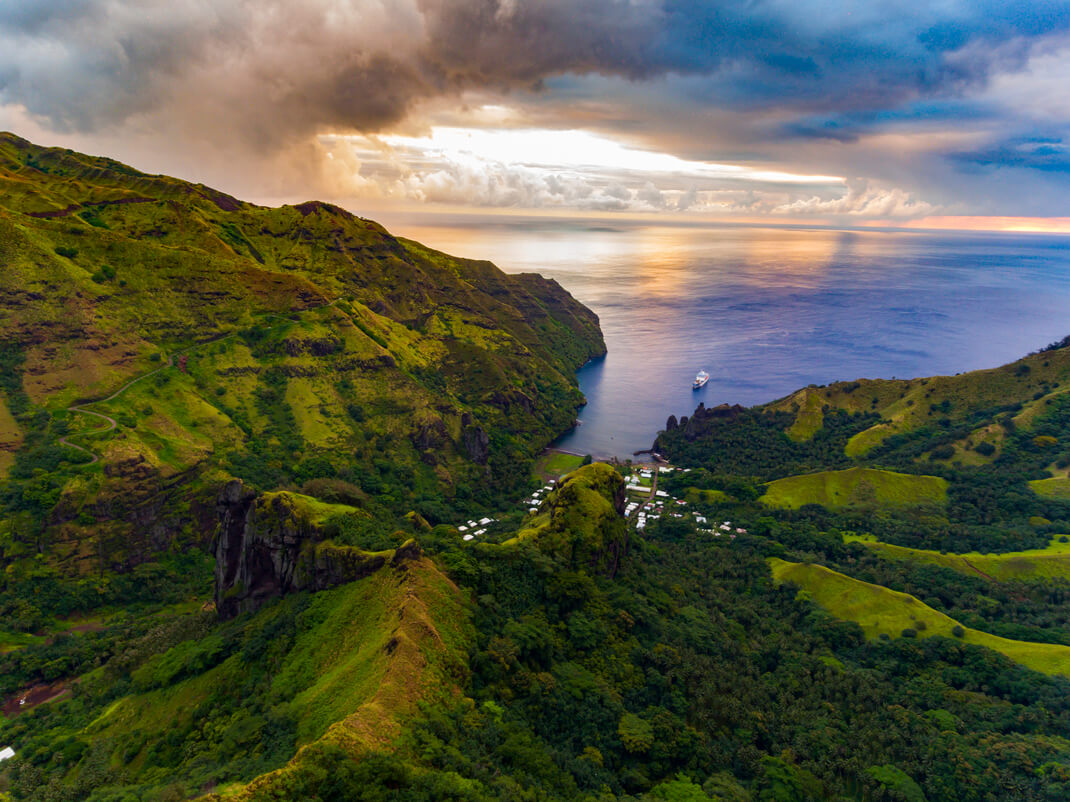
19/07/2022
The Island of Fatu Hiva: The unknown paradise
The remote islands of French Polynesia conjure up images of wild shores bathed in unspoilt beauty that are intoxicating and inspiring in equal measure. None more so than the enchanting Marquesas Islands, located 1000 miles northeast of Tahiti. Reaching them is a rare treat and one of the more original and unforgettable ways is through a cruise in French Polynesia 12-day voyage aboard passenger-cargo vessel Aranui 5 – fondly known as the ‘freighter to paradise’. Aranui 5 visits all six of the inhabited islands of the Marquesas archipelago with Fatu Hiva being a particular highlight of the 12-day voyage.
Where is Fatu Hiva located?
Fatu Hiva is an island located in the southeastern Pacific Ocean that is part of the French Polynesia archipelago. It is part of the Marquesas Islands and is located about 1,100 kilometers (700 miles) northeast of Tahiti. Fatu Hiva has an area of just over 84 square kilometers, making it the fourth largest of the Marquesas Islands after Nuku Hiva, Hiva Oa and Ua Pou. The island is of volcanic origin, with towering cliffs and a rocky coastline. The interior of the island is mountainous, and much of it is covered by lush rainforest. Despite its remoteness, Fatu Hiva is home to a small population of about 1,200 people. The majority of residents live in the village of Omo'a, located on the northern coast of the island. Tourism is an important part of the island's economy, and visitors come to Fatu Hiva to enjoy its unspoiled natural beauty.

Fatu Hiva is only accessible by sea, making it one of the most remote of the Marquesas but also the most authentic in the string of islands in the archipelago.
Passengers arriving at the island from on board the cruise ship, Aranui 5, are greeted by its sheer landscapes and pristine vegetation. It was this view that Thor Heyerdahl and his wife first saw in 1937, as they set foot on the island in their search for a genuine return to nature and to live as if at the dawn of the new world. Not much has changed today with most local people living around the village of Omoa on the east coast.
Fauna and flora of Fatu hiva
Fatu Hiva is home to a wide variety of plants and animals. The island's lush rainforests are teeming with endemic species, including the Red-tailed Phaeton, the Marquesas Monarch and the endangered Hawaiian Duck. The reefs around Fatu Hiva are home to a wide variety of corals and fish, and the offshore waters are home to dolphins, whales and turtles. On land, visitors can find wild boars, goats, chickens and pigs roaming free. With its natural beauty and abundant wildlife, Fatu Hiva is a true paradise for nature lovers.
What is the best season to go to Fatu Hiva?
The climate in the Marquesas is subtropical, warmer, and more humid than the Society Islands. While they are not affected by cyclones, they do experience more variable temperatures and more occasional rainfall. Generally speaking, the Southern Marquesas Islands, including Fatu Hiva, are more humid than the Northern Marquesas. The wet season is from January to early March, when temperatures are warmest with an average of 28°C. The yearly average maximum temperature in Fatu Hiva is about 28°C (ranging from 27°C in September to 29°C in April). The best time to cruise the Marquesas Islands is therefore between May and December, when there is the least amount of rain. However, it should be noted that any time of the year is a good time to visit the Marquesas Islands with Aranui 5, as the experience is primarily based on the discovery of Marquesan culture and traditions.
How much time do I need to spend on Fatu hiva?
Aranui 5 spends a day on the islands and passengers aboard the cruise ship have two options to discover the beauty of Fatu Hiva. For intrepid hikers there is the option of a 4-hour 15 km walk across the island from the village of Omoa on the east coast to Hanavavae in the west. The route takes in spectacular views of towering cliffs and passes through luxuriant tropical vegetation, with its heady mixture of exotic fragrances. A picnic lunch is served at the summit.
Discover Fatu Hiva with the Aranui
For non-hiking passengers aboard Aranui 5 there is still the chance to discover Fatu Hiva by taking the ship to sail from the island’s main town of Omoa to the island’s second town of Hanavave. Passengers then have the chance to go ashore and walk into the village to see the elaborate wooden altar in the small church and wonder at the spectacular waterfall at the end of the valley.
What activities can we do?
On arriving at the west coast and the island’s second village, Hanavave passengers will see a sheltered cove at the mouth of a steep-sided valley. This is one of the world’s most beautiful natural bays in the world and is called the Bay of the Virgins. Recognised by UNESCO, the bay is especially beautiful at dusk when the setting sun bounces purple halos of light off the towering basalt cones to illuminate the volcanic peaks and create a mesmerising sunset.
What to see on the island of Fatu hiva?

The lush outpost is a centre for Marquesan crafts and visitors arriving in Omoa will see women making Tapa out of tree bark. Hammering Mulberry, Banyan, or Breadfruit bark on a log, this traditional craft is an all but forgotten art on many other islands and when dried it becomes a canvas for painting ancient motifs and designs. Kumuhei, a herbal bundle used by local women to perfume their hair, is another unique art form to the island. Fatu Hiva also is widely recognised for its hand-painted 'pareo' wraparound skirts, and the finest 'monoi' coconut oil infused with flowers from 'Tahiti tiara,' vanilla, or Sandalwood.
How to organise your activities on the island of Fatu hiva?
The easiest way to organise activities is by joining the cruise aboard Aranui. An organised excursion takes passengers to the quiet village of Omoa to see women making Tapa out of tree bark and hand-painting ‘pareo’ as well as ‘monoi’ coconut oil. Passengers will also meet qualified sculptors in the large craft centre and can buy a range of traditional souvenirs from the Marquesas.
Would you like to discover the Polynesia ? Check out our cruises in French Polynesia:

Read also



